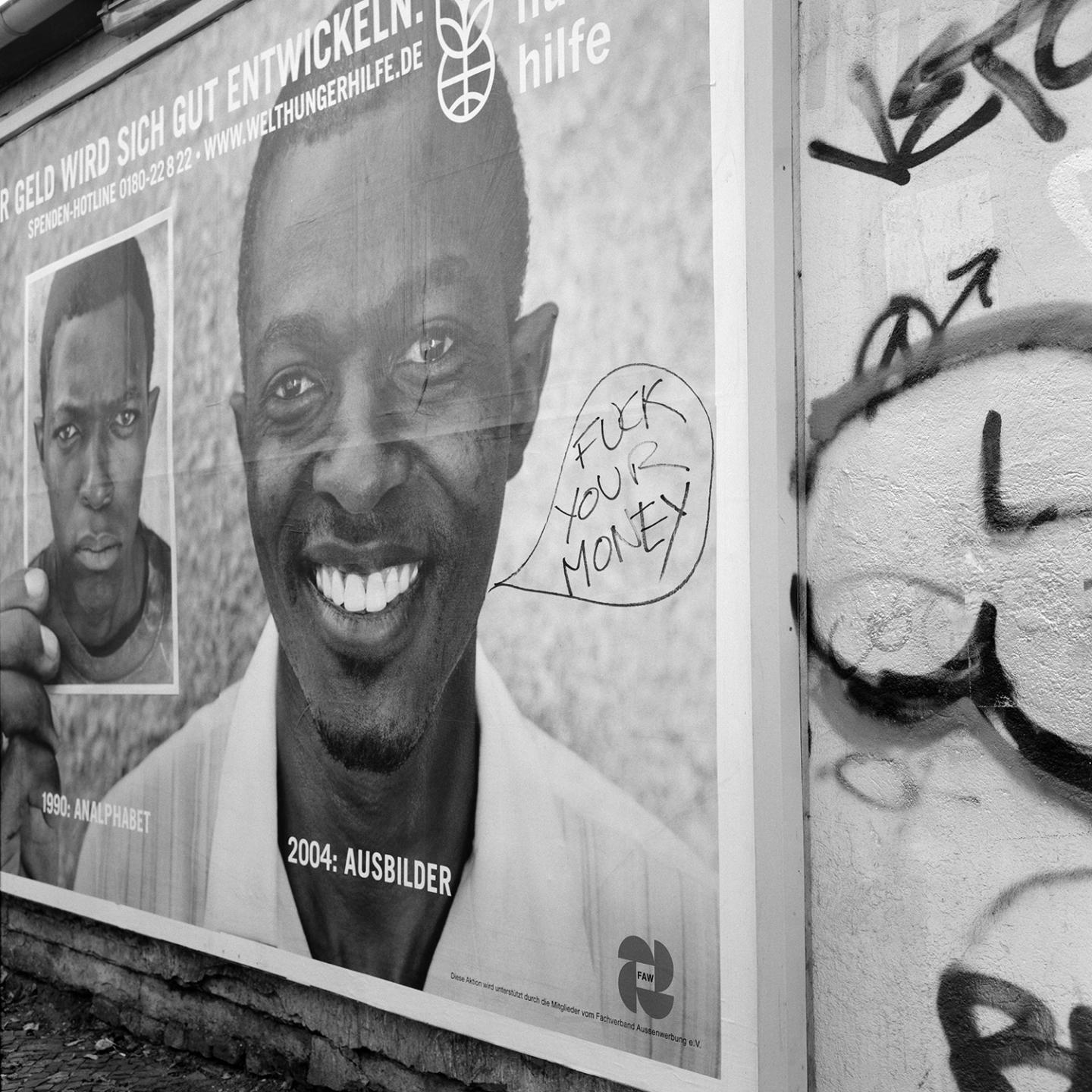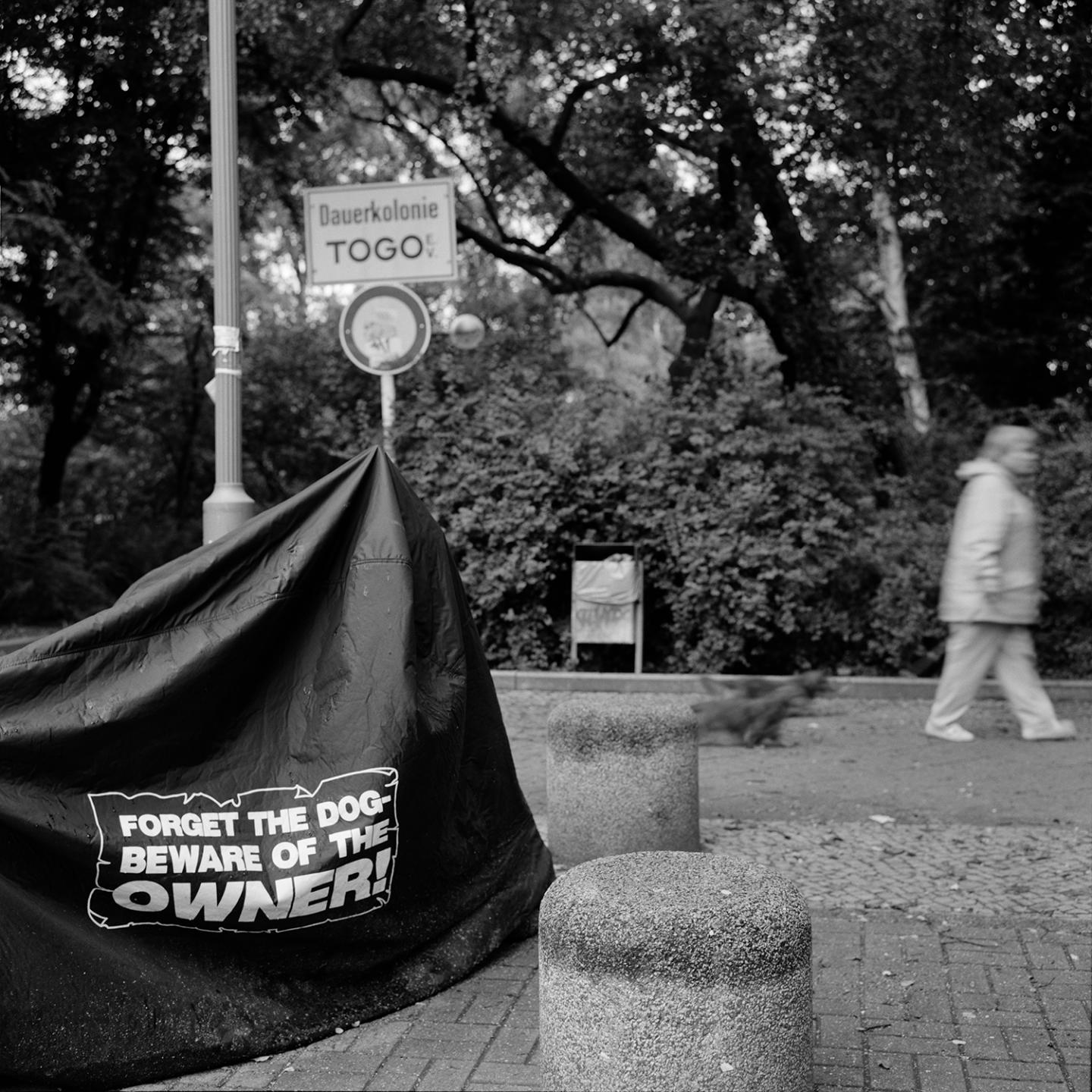Akinbode Akinbiyi's Topographies of Berlin's Buried Past
The photographer retraces the history of the German capital's 'African Quarter'
The photographer retraces the history of the German capital's 'African Quarter'

Pablo Larios What inspired your photographic series ‘African Quarter’ (1995–ongoing)?
Akinbode Akinbiyi When I moved to Berlin in 1991, I began documenting the so-called African Quarter in Wedding, a residential area where the streets were named after German colonies and other regions in Africa: Togostraße, Kameruner Straße, Afrikanische Straße. In 1958, for instance, a street was named to mark Ghana becoming the first independent country in sub-Saharan Africa. My work looked at the relationship between these street names and what was actually happening on the ground in terms of the corresponding countries’ political and socio-economic struggles.

PL Currently, there are calls to rename some of these streets.
AA Lüderitzstraße, Petersallee and Nachtigalplatz reference former German colonialists who committed appalling human-rights abuses. Petersallee, for instance, was originally named after the German colonial ruler Carl Peters, who was an instigator of horrific abuse. Instead of completely changing the name, however, the authorities just rededicated the street to Hans Peters, a resistance fighter against Nazism.

PL When you started the ‘African Quarter’ series, Germany was just embarking on the reunification process. What do you feel have been the most significant changes since then?
AA When I came to Berlin, almost 30 years ago, there were very few Africans or Afro-Germans here. Since then, I’ve noticed an opening-up towards people of colour from other parts of the world. There are still those who don’t like it, but now there is a big community of migrants in Berlin. And, within the African Quarter specifically, some of the residential buildings have been refurbished and modernised. There’s always a drive to make things better.

PL Other Berlin street names – Paul-Robeson-Straße or Martin-Luther-King-Weg, for instance – commemorate Black figures involved in the civil-rights struggle. To what extent are you interested in the histories of such activism?
AA It’s a good question. I’ve been to both streets to see how these famous civil-rights activists have been commemorated. Pre-reunification, there was far greater recognition for the civil-rights movement in the socialist former German Democratic Republic than there was in West Germany. In general, Eastern bloc European countries were opposed to the segregationist Jim Crow laws of the US and looked more favourably on movements to liberate oppressed people.

PL Some see Berlin as a diverse and tolerant city. Others perceive racism in every corner. Where do you stand on that spectrum?
AA I have a very close friend, whom I’ve known since the 1970s. He lived in France, the UK and Belgium before studying, like me, in Germany, which is how we met. I asked him once about the differences in racist attitudes within Europe. He responded very reflectively, saying: ‘It’s more or less the same everywhere.’ But, he added, one of the worst places is Germany. My own experience has been very similar. I’ve found that institutional racism is so deeply embedded that many people are unwilling to even think about it. If I were in a relationship with a woman from a conservative German family, someone would almost certainly disapprove. Things are definitely opening up, but there are still a lot of very dysfunctional tendencies that we have to work against. I say ‘we’ deliberately because we are all part of the same human family. Many other problems – such as femicide, child abuse, human trafficking – persist too, besides racism. There are still people with very negative agendas, who do not accept the differences of others. It’s a constant – albeit forward-moving – struggle. But I’m an optimist; I’m hopeful for positive, forward-looking outcomes.

The article first appeared in frieze issue 214 with the headline 'African Quarter'.
Main image: Akinbode Akinbiyi, Berlin, Moabit, 2016, photograph. Courtesy: the artist
























